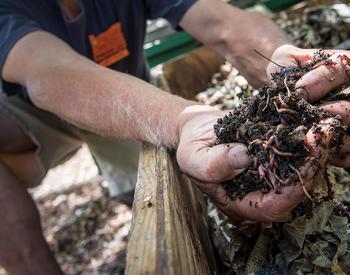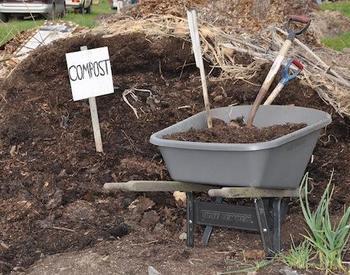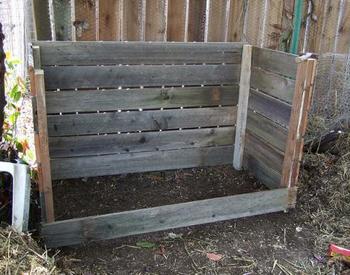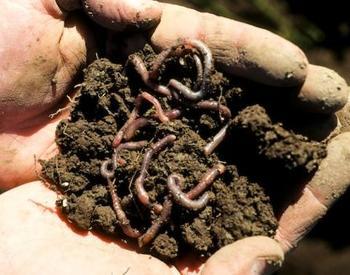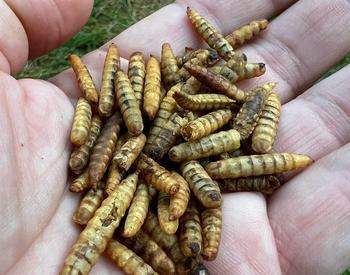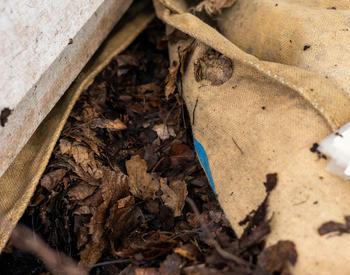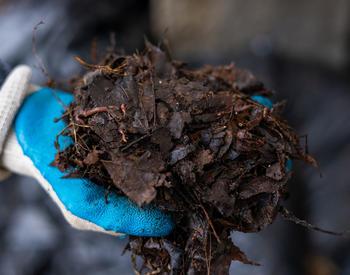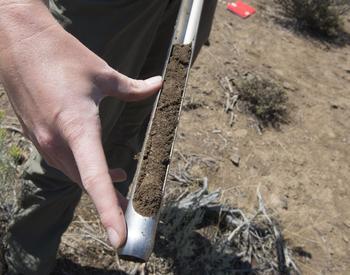CORVALLIS, Ore. – Adding organic matter is the best way to improve nearly all kinds of soils. If you're unsure if your soil needs amendments, take note if it dries and cracks in summer, drains slowly or is difficult to dig whether wet or dry.
Adding organic materials improves the ability of sandy soils to hold nutrients and water, according to Weston Miller, Oregon State University Extension Service horticulturist. For clay soil, organic additions improve drainage and aeration and help the soil dry out and warm up more quickly in the spring.
The best soil amendment is partially broken-down organic material, better known as compost, Miller said. You can make compost at home or buy compost. Finished compost is available in bags at plant nurseries and home improvement centers. You can also buy compost in bulk from landscape supply companies.
Weston Miller’s Keys to Success
Follow these guidelines to add the right amount of compost to your site for growing vegetables.
- For new garden beds: Apply a 3- to 4-inch layer of compost to the soil surface. Add other amendments such as lime and N-P-K fertilizer as needed (check individual plant requirements. You don’t want to over-fertilize.) Incorporate the materials into the top 8 to 12 inches of soil with a digging fork or spade. Or, use a rototiller.
- For existing garden beds: Apply a layer of compost, a quarter-inch to 1-inch deep, to the bed surface each year. Add other amendments such as lime and N-P-K fertilizer as needed. Incorporate the materials into the top 8 to 12 inches with a digging fork or spade. Or, use a rototiller.
- When filling framed raised beds enclosed by retaining walls, use a soil mix. Don’t fill them with compost by itself. Add compost to soil before you plant. Spread a 3- to 4-inch layer of compost over the area you intend to plant. Mix the compost into the soil as deeply as possible. Then install new plants into the amended soil.
Follow these guidelines for adding compost to improves growing conditions for lawns:
- For new lawns: Before you establish a lawn with seed, add a 1- to 2-inch layer of compost to the work area. Rake or rototill the compost into the soil. Apply a layer of compost, one-quarter to one-half -inch deep, to cover newly sown lawn seed. Use the same preparation when installing sod. See Practical Lawn Establishment and Renovation.
- For existing lawns: apply about one-quarter inch of compost over the grass. Work it into the soil surface. You can use an aerator machine or device to incorporate the compost into the soil. Perform this work in the spring when the grass is actively growing. See Practical Lawn Care for Western Oregon, and Turfgrass maintenance calendar for Central Oregon.
Find more information about how to use compost in gardens and landscapes in How to Use Compost in Gardens and Landscapes.
Compost and soil mix products sometimes contain herbicide residue. This residue can damage certain vegetable, fruit and flower crops.
Before you purchase a bulk load of compost or soil mix, contact the vendor. Ask how they handle herbicide contamination risk.
Find more information about this important topic: Herbicide-Contaminated Compost and Soil Mix: What You Should Know — and What You Can Do About It.
More information on improving vegetable garden soils is available in Growing Your Own, a practical guide to gardening for first-time gardeners.
If you have questions about improving the soil in your garden or landscape or other gardening topics, use OSU’s Ask Extension to enter your question and upload photos of the situation.
